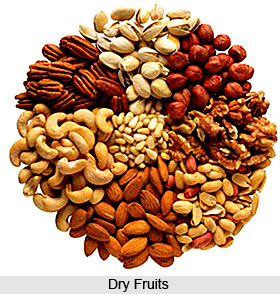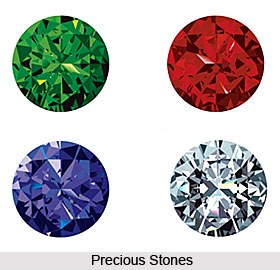 Trade in Mughal India was quite large and diversified and involved huge numbers of people. Besides, agriculture, industries had witnessed tremendous growth during the Mughal era. Long distances trade was supported by improved conditions of the transport systems. One of the most significant industries of the Mughal era was that of cotton cloth making industry. Throughout the country various cotton manufacturing units were scattered that effectively catered to the huge demands both domestic and international. Since long, province of Bengal was well known for fine quality cotton and silk cloth. It was also believed that the amount of cloth manufactured in the region of Bengal was more than several kingdoms of the country and Europe when put together.
Trade in Mughal India was quite large and diversified and involved huge numbers of people. Besides, agriculture, industries had witnessed tremendous growth during the Mughal era. Long distances trade was supported by improved conditions of the transport systems. One of the most significant industries of the Mughal era was that of cotton cloth making industry. Throughout the country various cotton manufacturing units were scattered that effectively catered to the huge demands both domestic and international. Since long, province of Bengal was well known for fine quality cotton and silk cloth. It was also believed that the amount of cloth manufactured in the region of Bengal was more than several kingdoms of the country and Europe when put together.
Along with the growth of the cloth industry the dyeing industry was gradually doing well. Carpet and shawl weaving were other vital industries received major patronage during Akbar`s reign. Another major industry of that era was ship building industry however India remained no longer a principal maritime country. During the Mughal reign, currency also started to develop. Mughal India had prospering trade relations with several other countries of the world. Foreign trade was a significant part of the economy of India during Mughal rule. Some of the major Indian imports of that time were gold, ivory, raw silks, perfumes, horses and precious stones. Major Indian exports at that time were spices, opium, textiles and indigo. Land transportation was not considered safe and reliable during the Mughal rule. Thus, more popular choices were sea and river transport. During hat period, customs duties were low and it was near about 3.5 percent on all exports and imports.
 Pepper was one of the most important articles of trade and commerce along the western coast. In different parts of the country, different communities dominated trade. Like for instance, Punjabi and Multani merchants handled business in the northern region, while the Bhats managed the trade in the states of Gujarat and Rajasthan. Due to the coordinated system set up by the government, internal trade flourished in the country. Exports in India far exceeded its imports both in terms of items and volume. Active trade existed on and along the Ganga River and Yamuna River up to the city of Agra. This city mostly imported raw silk and sugar from the province of Bengal and Patna, besides obtaining butter, rice and wheat from eastern provinces. Salt was carried down by river means to Bengal. Again from Agra, wheat, sugar and Bengal silk were carried down to Gujarat. Besides the developed means of transport trade in Mughal India was also influenced by other factors. Like for instance, it is said that in the Indian trade during Mughal era, European traders also played an important role. Many of them also established warehouses as well as distribution points in Mughal India. However, historians say that most of the European goods were afforded only by the rich people. These included scented oils, perfumes, dry fruits, precious stones, wines, corals and velvets.
Pepper was one of the most important articles of trade and commerce along the western coast. In different parts of the country, different communities dominated trade. Like for instance, Punjabi and Multani merchants handled business in the northern region, while the Bhats managed the trade in the states of Gujarat and Rajasthan. Due to the coordinated system set up by the government, internal trade flourished in the country. Exports in India far exceeded its imports both in terms of items and volume. Active trade existed on and along the Ganga River and Yamuna River up to the city of Agra. This city mostly imported raw silk and sugar from the province of Bengal and Patna, besides obtaining butter, rice and wheat from eastern provinces. Salt was carried down by river means to Bengal. Again from Agra, wheat, sugar and Bengal silk were carried down to Gujarat. Besides the developed means of transport trade in Mughal India was also influenced by other factors. Like for instance, it is said that in the Indian trade during Mughal era, European traders also played an important role. Many of them also established warehouses as well as distribution points in Mughal India. However, historians say that most of the European goods were afforded only by the rich people. These included scented oils, perfumes, dry fruits, precious stones, wines, corals and velvets.
Thus, it is clear that the Mughal era witnessed the foundation of stable trade centres apart from uniform provincial government. The Mughal age was considered as the age of relative peace and security and in this era trade and commerce flourished tremendously. The growing foreign trade led towards the establishment of market places in towns and also in villages. Handicrafts production increased for meeting the trade demands. During the Mughal era the major urban centres were Agra, Delhi, Thatta, Lahore, Multan and Srinagar in northern region. In the western part, significant trade cities were Ahmedabad, Khambat, Surat and Ujjain. The booming trade centres in the eastern region were Patna, Chitgaon, Dhaka, Hoogli and Murshidabad.



















